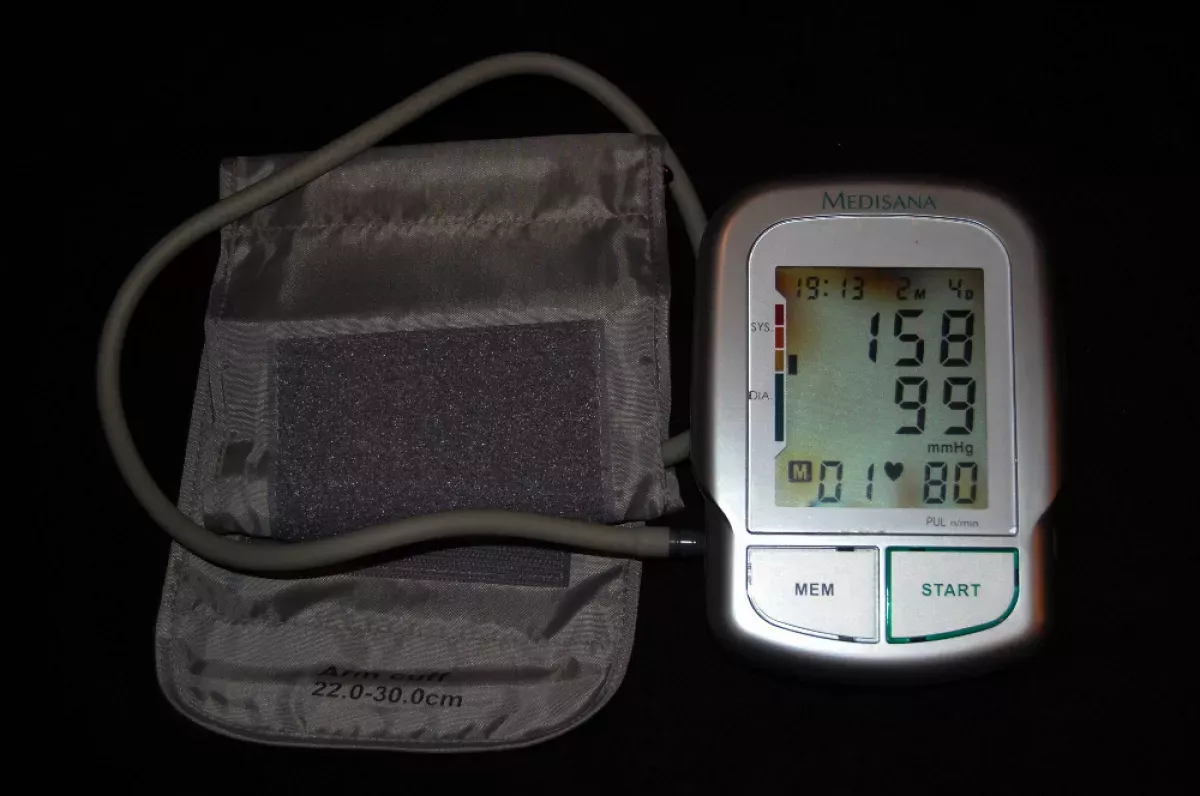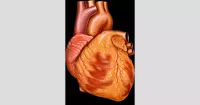Hypertension, commonly known as high blood pressure, is a chronic medical condition characterized by persistently elevated pressure in the arteries. While it often presents no symptoms, it significantly increases the risk of serious health issues such as stroke, coronary artery disease, heart failure, atrial fibrillation, peripheral arterial disease, vision loss, chronic kidney disease, and dementia. Hypertension is a leading cause of premature death globally.
1900: First Chemical for Hypertension
In 1900, sodium thiocyanate became the first chemical used to treat hypertension, but it was unpopular due to its many side effects. This marked an early attempt to manage hypertension through medication.
1905: Korotkoff Sounds Described
In 1905, Nikolai Korotkoff improved blood pressure measurement techniques by describing the Korotkoff sounds, which are heard when the artery is auscultated with a stethoscope while the sphygmomanometer cuff is deflated. This advancement allowed for the measurement of both systolic and diastolic pressure.
1958: Introduction of Chlorothiazide
In 1958, chlorothiazide, the first thiazide diuretic, was introduced. Developed from the antibiotic sulfanilamide, it became the first well-tolerated orally available antihypertensive agent, representing a major breakthrough in hypertension treatment.
1990: Global Hypertension Statistics in 1990
In 1990, approximately 648 million adults aged 30–79 worldwide were estimated to have hypertension. This figure nearly doubled by 2019, reflecting a significant rise in the prevalence of hypertension over the decades.
1993: New Hypertension Threshold in 1993
In 1993, the WHO/ISH guidelines redefined the threshold for hypertension as a systolic blood pressure of 140 mmHg, lowering it from the previous definition of 160 mmHg or greater. This change aimed to better identify and manage hypertension.
1995: Hypertension Prevalence in the US in 1995
In 1995, it was estimated that 43 million people, or 24% of the population in the United States, had hypertension or were taking antihypertensive medication.
2003: Benefits of Blood Pressure Reduction
According to a 2003 review, reducing blood pressure by 5 mmHg can decrease the risk of stroke by 34%, ischemic heart disease by 21%, and reduce the likelihood of dementia, heart failure, and cardiovascular disease mortality. This underscores the benefits of even modest reductions in blood pressure.
2003: Recommendations for Estimating Kidney Function
In 2003, the JNC7 guidelines recommended using the Modification of Diet in Renal Disease (MDRD) formula to estimate glomerular filtration rate (eGFR) for assessing kidney function in hypertensive patients. This method was advocated to provide a baseline measurement and monitor the effects of antihypertensive drugs on kidney function.
2004: Hypertension Prevalence in the US in 2004
By 2004, the prevalence of hypertension in the United States had increased to 29%, reflecting a growing health concern.
2004: Hypertension Rates in 2004
In 2004, hypertension rates were highest in Africa at 30% for both sexes and lowest in the Americas at 18%. Rates varied significantly within regions, such as 22.8% for men and 18.4% for women in Peru and 61.6% for men and 50.9% for women in Paraguay.
2004: Debate on Routine Hypertension Screening in 2004
In 2004, various health organizations, including the National High Blood Pressure Education Program and the National Heart, Lung, and Blood Institute, recommended routine blood pressure screenings for children aged 3 years and older. However, the American Academy of Family Physicians and the U.S. Preventive Services Task Force found insufficient evidence to justify routine screenings in asymptomatic children and adolescents.
2005: Global awareness campaign on hypertension initiated
In 2005, the World Hypertension League (WHL) launched a global awareness campaign on hypertension and designated 17 May as World Hypertension Day (WHD). This initiative aimed to address the issue that more than 50% of the hypertensive population worldwide were unaware of their condition.
2007: Record participation in World Hypertension Day
In 2007, World Hypertension Day saw record participation from 47 member countries of the World Hypertension League (WHL). During the week of WHD, these countries partnered with local governments, professional societies, NGOs, and private industries to promote hypertension awareness, reaching over 250 million people through mass media and public rallies.
2010: Hypertension's Global Impact in 2010
In 2010, hypertension was believed to have been a factor in 17.8% of all deaths, amounting to 9.4 million globally. High blood pressure affected between 16 and 37% of the population worldwide. This highlights the significant health burden posed by hypertension during this year.
2010: Cost and awareness of hypertension in the US
In 2010, the American Heart Association estimated the direct and indirect costs of high blood pressure in the US at $76.6 billion. Despite 80% of people with hypertension being aware of their condition and 71% taking medication, only 48% had adequately controlled it. Effective management could significantly reduce the risk of death and other conditions.
2013: Hypertension Prevalence in Europe in 2013
In 2013, approximately 30–45% of people in Europe were reported to have hypertension, indicating a significant public health issue in the region.
2014: Global Hypertension Statistics in 2014
In 2014, the number of adults aged 30–79 worldwide with hypertension was significantly lower than in 2019 but marked an increase from previous decades, illustrating a rising trend in the prevalence of the condition globally.
2015: Dietary Potassium and Hypertension
In 2015, the Dietary Guidelines Advisory Committee (DGAC) highlighted that increasing dietary potassium could potentially lower the risk of hypertension. However, people on certain antihypertensive medications, like ACE inhibitors or ARBs, were advised against taking potassium supplements due to the risk of elevated potassium levels.
2016: Hypertension Rates in Africa in 2016
By 2016, hypertension rates in Africa were approximately 45%, reflecting a consistently high prevalence of the condition in the region over the years.
2017: Hypertension Redefined in the US in 2017
In 2017, with the change in definitions for hypertension, 46% of people in the United States were affected. African-American adults in the U.S. had among the highest rates of hypertension in the world at 44%.
2017: 2017 AHA Guidelines for Hypertension Medication
The 2017 American Heart Association guidelines recommended medications for individuals with systolic blood pressure over 140 mmHg or diastolic blood pressure over 90 mmHg if they had no prior cardiovascular disease and a 10-year risk of less than 10%. For those with cardiovascular disease or with a higher risk, medications were recommended at lower thresholds of 130 mmHg systolic or 80 mmHg diastolic.
2018: Alcohol's Effect on Blood Pressure
A 2018 review found that any consumption of alcohol increased blood pressure in males, while consuming more than one or two drinks increased the risk in females. This indicates gender-specific differences in how alcohol impacts hypertension.
2019: Global Hypertension Statistics in 2019
As of 2019, an estimated 1.278 billion adults aged 30–79 worldwide had hypertension, including 626 million women and 652 million men. This represented a significant increase from 2014 and almost double the number in 1990, highlighting a growing global health concern.
Trending
6 months ago Charley Hull shines at Women's PGA Championship, pursuing major breakthrough after near misses.

4 months ago Colorado Lottery results: Pick 3 Midday and Evening winning numbers for August 14, 2025.
Spirit Airlines is an American ultra-low-cost carrier based in Florida operating scheduled flights across the U S Caribbean and Latin...

1 month ago Widespread Flight Cancellations and Delays Ground Thousands of Passengers Across the US

10 days ago Candace Cameron Bure resists cancel culture, unveils new 'Rise and Renew' devotional.
1 month ago Six missing children found safe in Lancaster County after search by police.
Popular

Candace Owens is an American conservative political commentator and author...

Ilhan Omar is an American politician currently serving as the...

XXXTentacion born Jahseh Dwayne Ricardo Onfroy was a controversial yet...

Tom Cotton is an American politician and Army veteran currently...
The Kennedy Center Honors are annual awards recognizing individuals and...

Kelsey Grammer is an accomplished American actor producer and singer...

